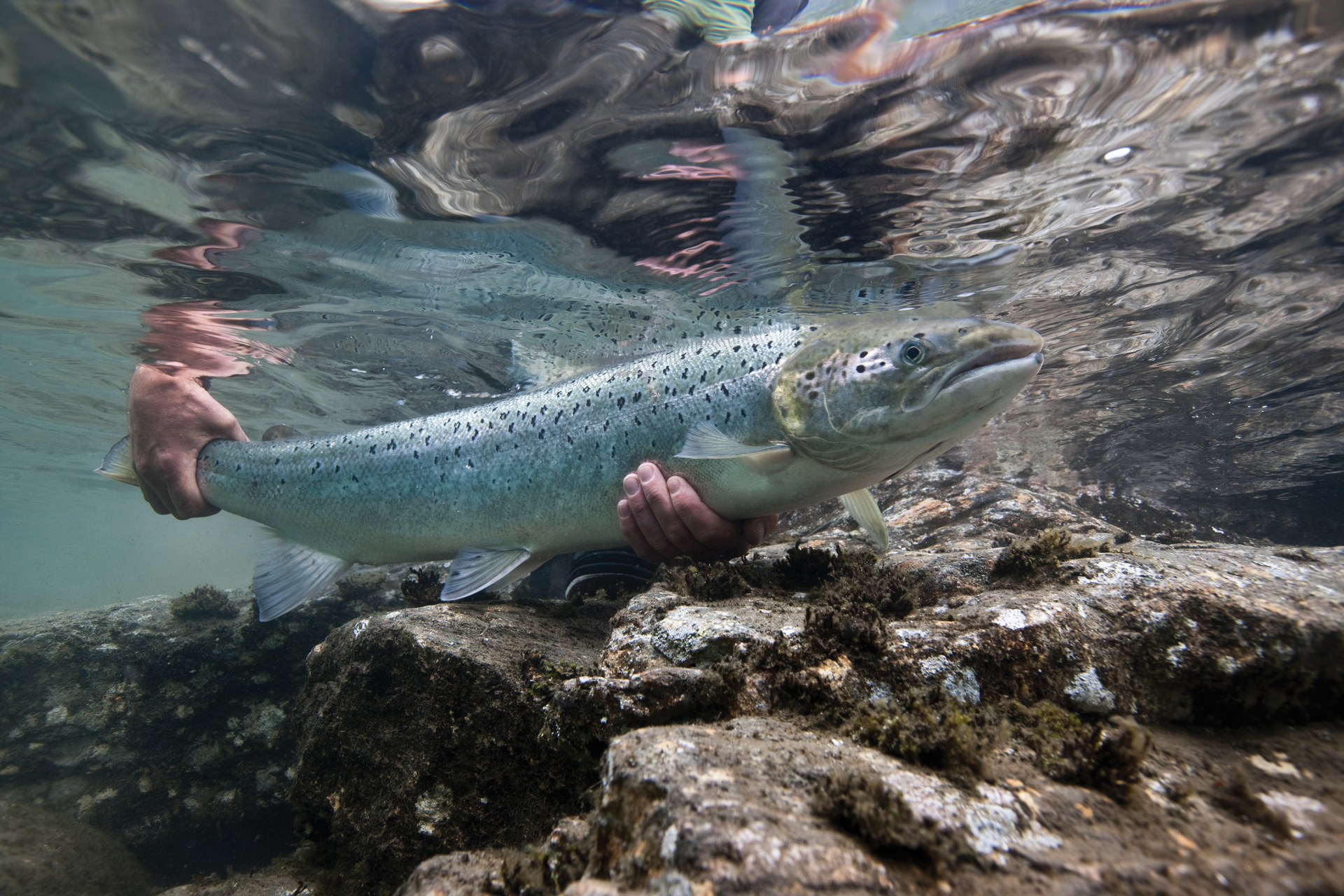Dennis Hanagan –
A feat of nature will take place this autumn right under the noses of Cabbagetown, Riverdale, Regent Park and Corktown residents.
It’s the annual salmon-run – when 30-pound, metre-long fish defy shallow waters, river currents and fishermen to make their thousands-year-old run up the Don River to spawn in its Oak Ridges Moraine headwaters.
Rick Portis, senior manager of Aquatic Monitoring and Management with Toronto and Region Conservation Area, never ceases to be amazed at the salmon’s determination to get upstream.
“It’s quite the spectacle to see these large animals swimming through the water,” Portis said in an interview. “When they start their run, they don’t feed as much as they normally would. Their main drive is to get up into the headwaters to spawn. They’re very persistent.”
Today, Chinook salmon run the Don. But for thousands of years it was Altantic salmon. European settlers put an end to that with mill dams and over-fishing, according to Portis. “They wiped them right out.”
TRCA’s website quotes John McCuaig, Upper Canada’s superintendent of fisheries in the early 1800s, saying Atlantic salmon “swarmed the rivers so thickly that they were thrown out with a shovel and even with the hand.” Early settlers didn’t gauge their catch by the numbers of fish they caught, Portis said. “They measured them by the barrel loads.”
Unlike early settlers, Indigenous people didn’t over-exploit nature’s offerings. “Salmon was a food source,” said Portis. “They absolutely didn’t want that resource to go to waste. They took what they needed and left the rest.”
Attempts are being made to reintroduce Atlantic salmon into Lake Ontario from the northern United States and the East Coast. “But they’re not taking to it as well as the original strain,” said Portis.
Chinook – a Pacific salmon, not native to the Great Lakes – is stocked in Lake Ontario. About 30 species of fish are in the Don, but some are inclined to lake life and prefer to hang around the Don’s mouth, said Portis.
Salmon runs take place across the Great Lakes and North America. They spawn on any gravelly, fast-moving portions of a river or stream. “There’s big chunks of the Don River all the way up to Todmorden (Mills) that they’ll spawn in,” said Portis, adding that Todmorden is a good place to spot them. “You’ll see them zipping up through that rocky ramp area.”
With determination and strong lateral muscles, salmon can overcome many obstacles. “Salmon are pretty powerful so they can jump quite high to get over a lot of barriers, in and around fallen logs and dams and other things. There’s not a lot to stop them,” said Portis.
When it comes to weirs – a small barrier across a river – the fish can use a little help. That’s where rocky ramps come in. Rocks are placed in front of the weir gradually leading down to the riverbed. “As the water flows over the rock it allows the fish to navigate up through the weir,” Portis explained.
Chinook salmon start their run-in late September and early October. They’re known as terminal spawners because after they spawn, they die. But that’s not the end of their contribution to nature.
“When the body decays in the river system or stream, the nutrients feed small little bugs, which in turn feed small fish after they hatch,” said Portis. So salmon hatchlings might be feeding on the nutrients of their parents.
How do salmon know the river or stream they were born in and return to it to spawn? “The main theory is that they follow the scent of the river they were born in,” Portis said. “When they’re out in the lake they find that scent and follow it back into the river system.”
TRCA is holding a free family festival called Adventures of Salmon on Sunday Sept. 22 at Highland Creek in eastern Scarborough from 10-3 p.m. Participants will learn about salmon migration, their species and life cycles – and possibly see salmon jumping in the creek. Visit https://trca.ca/salmon-adventures/.




